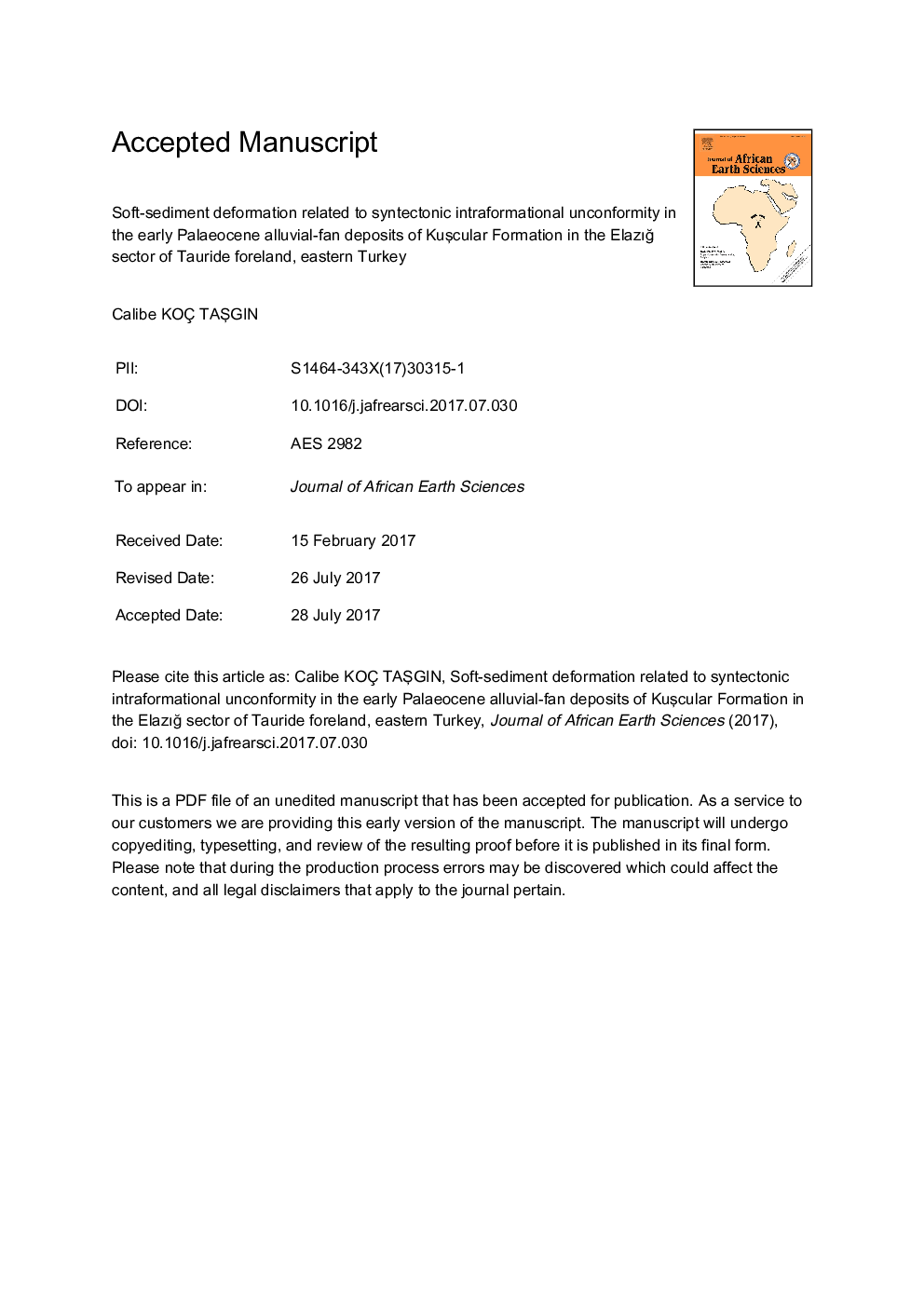| Article ID | Journal | Published Year | Pages | File Type |
|---|---|---|---|---|
| 5785591 | Journal of African Earth Sciences | 2017 | 46 Pages |
Abstract
The KuÅçular Formation was deposited in the early Palaeocene in a tectonically-controlled foreland basin in front of the southwards-advancing nappes of the Tauride orogen in eastern Turkey. This lithostratigraphic unit consists of alluvial-fan deposits, including distal mudflat-playa facies association. The proximal to middle fan deposits are composed of clastic sediments, whereas the distal deposits represent both clastic and evaporitic sedimentation. Compressional synsedimentary deformation caused development of an intraformational unconformity in the distal fan deposits of the KuÅçular Formation. Slump features and overturned beds were formed as a result of the oversteepening and recumbent folding of deposits due to the orogen thrust-wedge movement. Load casts, flame structures, intrusion features, sand dykes, interpenetrative cusps and synsedimentary faults were formed as a result of sediment liquefaction and remobilization. It is suggested that such levels of soft-sediment deformation in foreland terrestrial molasse deposits should be carefully studied as they may be related to 'hidden' unconformities and represent an important record of syndepositional tectonic and seismic activity in the basin.
Keywords
Related Topics
Physical Sciences and Engineering
Earth and Planetary Sciences
Geology
Authors
Calibe Koç TaÅgın,
